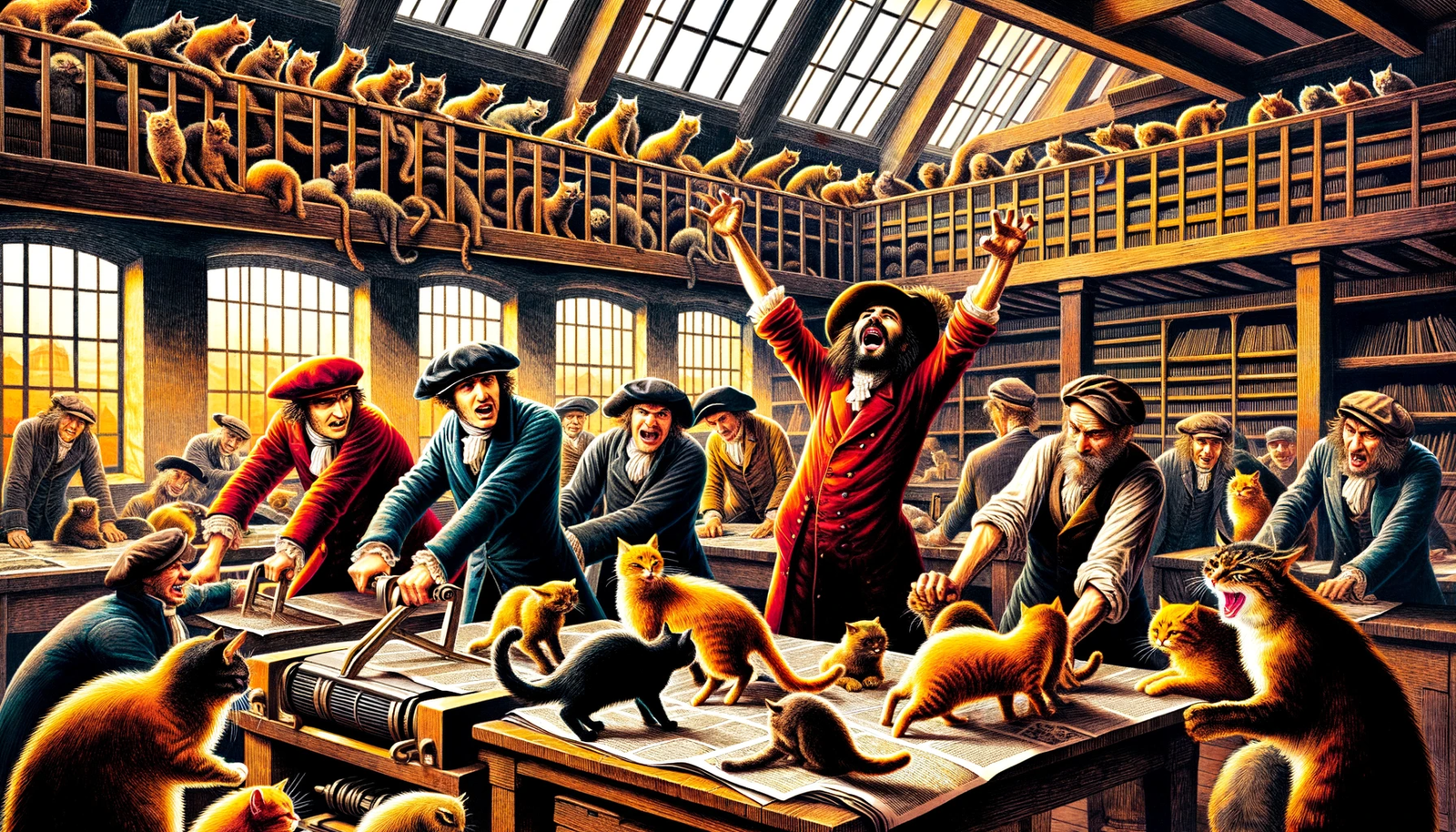The Great Cat Massacre of 18th Century Paris: A Dark Tale of Rebellion
Echoes in the Alleys: Setting the Historical Stage
In the bustling, narrow streets of 18th-century Paris, a unique historical drama was unfolding. The city, a melting pot of ideas and social unrest, was on the brink of monumental change. Amidst this tumultuous backdrop, the most unlikely of protagonists emerged: the domestic cat. The Great Cat Massacre, a bizarre and morbidly fascinating event, was more than just an act of animal cruelty; it was a symptom of the deeper societal malaise that gripped the city.
The Paris of the 1730s was a place of stark contrasts. Opulence and poverty coexisted uneasily, with the lavish lifestyles of the aristocracy juxtaposed against the dire circumstances of the working class. It was a time of intellectual awakening, yet also of great inequality and oppression. Understanding this dichotomy is crucial to grasp the true essence of the events that would transpire in a small printing shop.
Whispers of Revolt: The Life of Parisian Printers
The world of Parisian printers was harsh and unforgiving. Apprentices in these shops worked long hours under stringent conditions, often subjected to the whims and cruelties of their masters. In a society rigidly structured by class, these young men found themselves at the bottom, powerless and voiceless.
In one such printing shop, the stage was set for an extraordinary act of defiance. The apprentices, tired of their mistreatment and the constant belittling, sought a target for their frustrations. Their choice was as symbolic as it was tragic – the cats that roamed the shop and the streets, particularly those favored by their masters’ wife.
In the Shadows of Superstition: Cats in Cultural Lore
Cats in 18th-century Paris were enigmatic figures, wrapped in superstition and folklore. They were often associated with witchcraft and darkness, yet simultaneously revered as protectors against vermin. In the cramped quarters of the city, they were both feared and adored, embodying the contradictions of the time.
The apprentices’ fixation on these creatures was not random. By targeting the cats, especially those cared for by their oppressors, they were striking at a symbol of their masters’ authority and the inequities they suffered.
A Mockery of Justice: The Unraveling of the Massacre
The Great Cat Massacre began as a farcical imitation of a trial, with the apprentices casting themselves as judges and executioners. In a gruesome spectacle, they rounded up cats, subjecting them to a mock trial before their eventual slaughter. This act, while horrific, was laden with symbolic significance.
It was a distorted mirror to the justice system of the time, a system that often left the lower classes feeling helpless and marginalized. The massacre was an outlet for the apprentices’ pent-up anger and a desperate, twisted form of protest against their circumstances.
Legacy of a Rebellion: Historical Reflections and Modern Perspectives
The repercussions of the Great Cat Massacre reverberated far beyond the confines of the printing shop. While some contemporaries dismissed it as mere cruelty, others recognized it as a potent symbol of the growing unrest among the lower classes. Historians have since viewed it as a prelude to the seismic social and political changes that would soon engulf France.
The massacre remains a compelling subject for discussion, not only for its immediate horror but also for what it reveals about human nature, social dynamics, and the use of satire as a weapon against oppression. In the annals of history, the Great Cat Massacre stands as a testament to the complexity of rebellion and the enduring power of symbolism in our collective quest for understanding and change.




